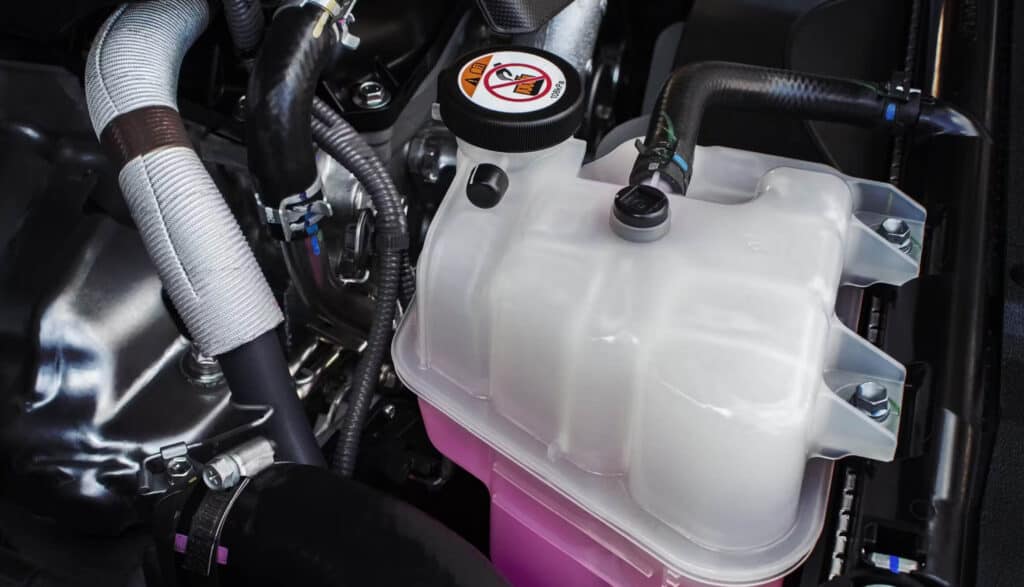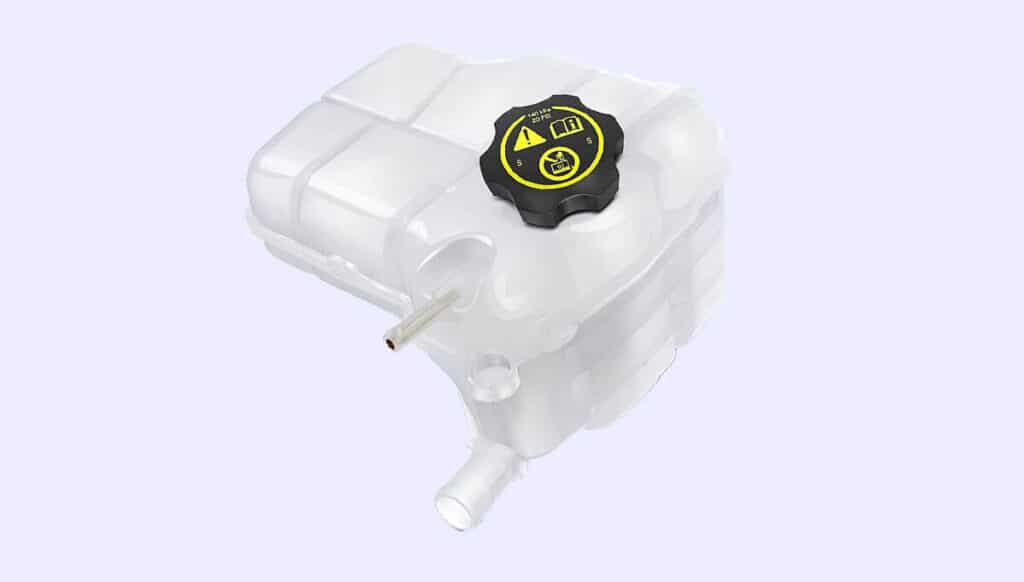If you’ve noticed a decrease in your car’s coolant level or puddles of coolant underneath your car, you may have a faulty coolant recovery tank. In this article, we’ll take a closer look at what a coolant recovery tank is, how to recognize signs of a faulty tank, and how to replace it.
What is a Coolant Recovery Tank?
A coolant recovery tank, also known as an overflow tank, is a small reservoir that holds excess coolant as it expands and contracts with temperature changes. The coolant is stored here until it is needed to maintain the proper level in the cooling system.

How Much Will it Cost to Replace a Coolant Recovery Tank in Canada?
The cost of replacing a coolant recovery tank in Canada can vary depending on the make and model of your vehicle, as well as the mechanic you choose. On average, you can expect to pay between $100 and $250 CAD for parts and labour. The labour time can take anywhere from 0.5 to 1.5 hours depending on the complexity of the repair.
What are the Symptoms of a Faulty Coolant Recovery Tank?
Here are some common symptoms of a faulty coolant recovery tank:
• Low coolant level
• Coolant leaks or puddles under the car
• Overheating engine
• Bulging or cracked tank
How Long Does a Coolant Recovery Tank Last?
A coolant recovery tank can last anywhere from 100,000 to 150,000 kilometers or longer, depending on driving habits and maintenance. However, it’s important to keep an eye out for signs of wear and tear and address any issues promptly to avoid further damage to the cooling system.
How Does a Coolant Recovery Tank Become Defective?
A coolant recovery tank can become defective due to normal wear and tear over time, as well as exposure to high temperatures and contaminants. Lack of regular maintenance or driving in extreme conditions can also contribute to premature failure.
How Can a Faulty Coolant Recovery Tank Affect Other Systems in the Car?
A faulty coolant recovery tank can affect other systems in the car, particularly the cooling system. Low coolant levels can cause the engine to overheat, which can lead to serious engine damage. Coolant leaks can also cause damage to other components in the engine compartment and may result in costly repairs.
Is it Safe to Drive with a Faulty Coolant Recovery Tank?
Driving with a faulty coolant recovery tank is not recommended, as it can lead to engine damage and potentially costly repairs. It’s important to address any issues with the coolant recovery tank promptly to avoid further damage to the cooling system.

How Can I Make My Coolant Recovery Tank Last Longer?
Here are some tips to help prolong the life of your coolant recovery tank:
• Regular maintenance: Follow the manufacturer’s recommended maintenance schedule to ensure all components, including the coolant recovery tank, are in good condition.
• Avoid extreme conditions: Avoid driving in extreme temperatures and conditions whenever possible, as these can cause damage to the coolant recovery tank and other components.
• Address issues promptly: If you notice any signs of a faulty coolant recovery tank, such as low coolant levels or leaks, address them promptly to avoid further damage.
Conclusion
A coolant recovery tank is an important component that helps maintain the proper level of coolant in your car’s cooling system. If you notice any signs of a faulty coolant recovery tank, such as low coolant levels or leaks, it’s important to address the issue promptly to avoid further damage to the cooling system. With proper maintenance and care, you can help prolong the life of your coolant recovery tank and keep your car running smoothly.
